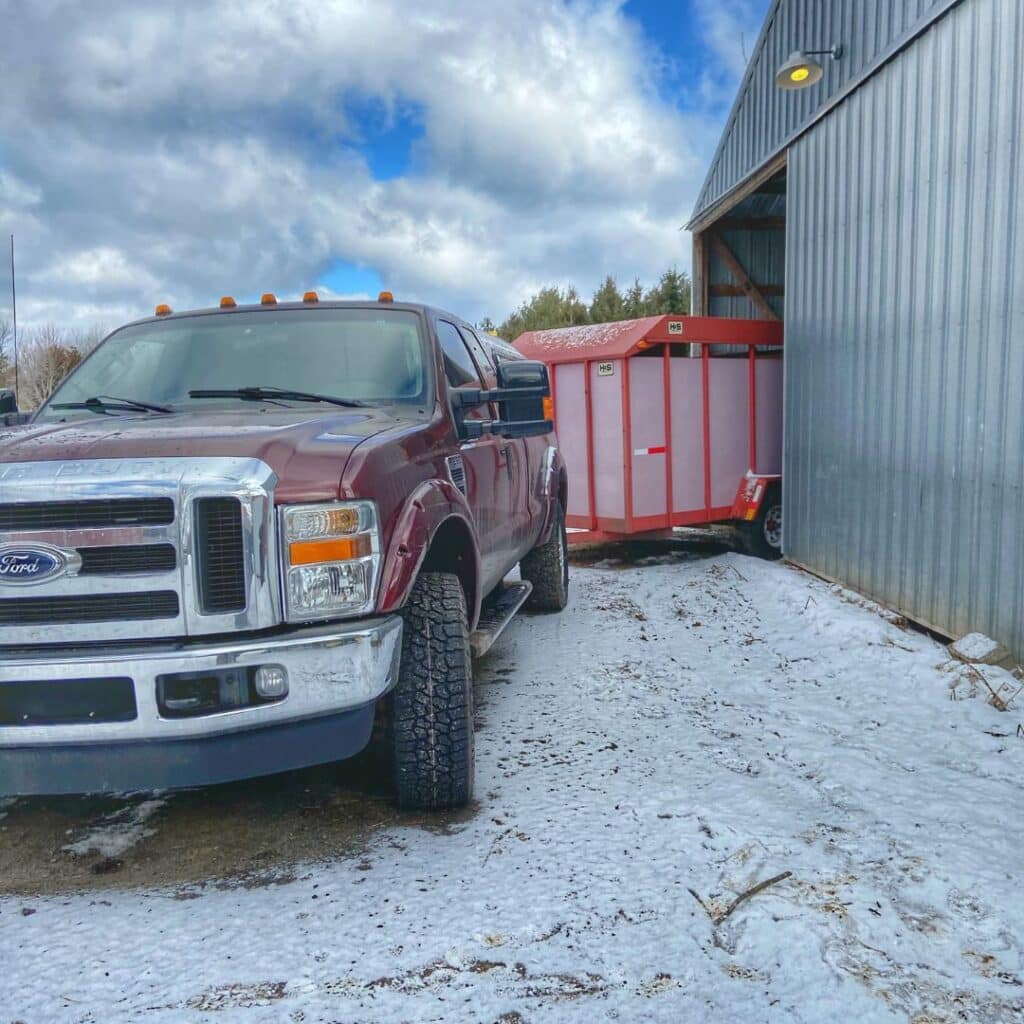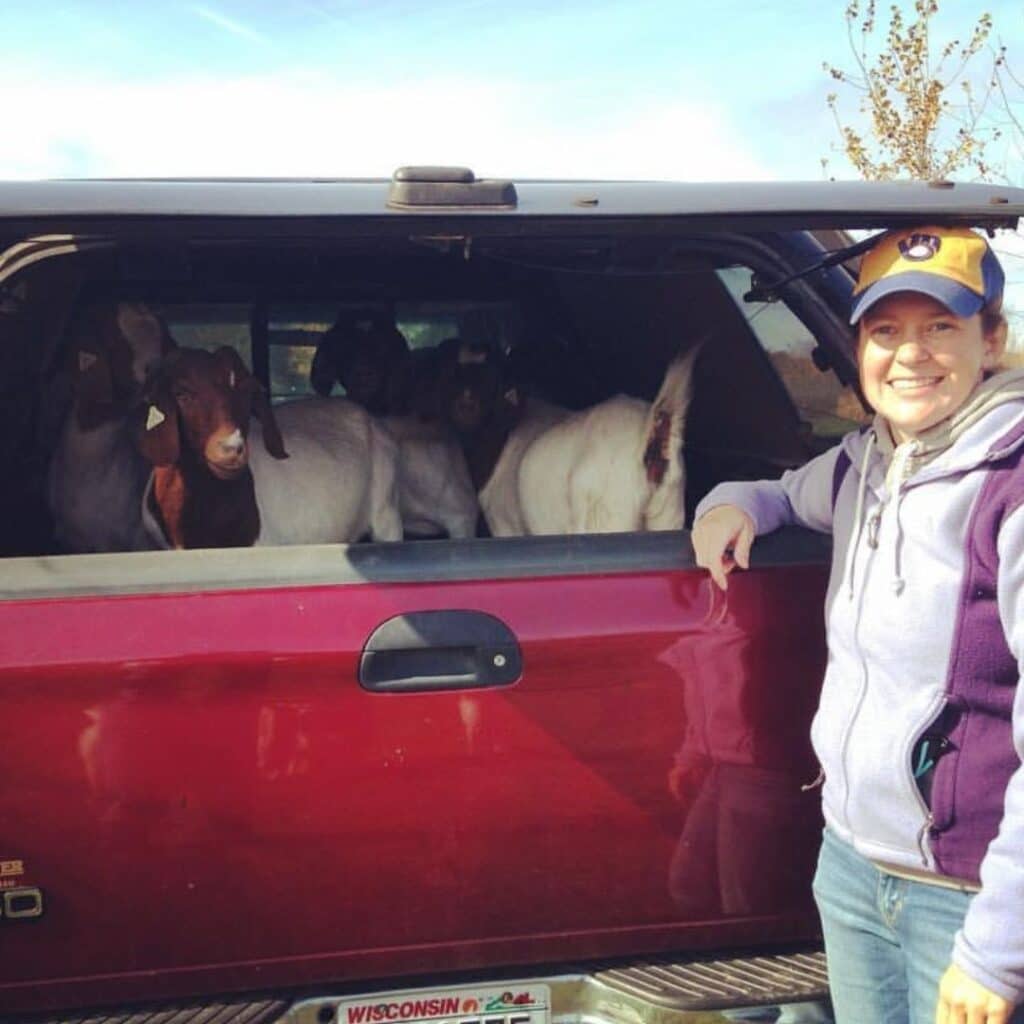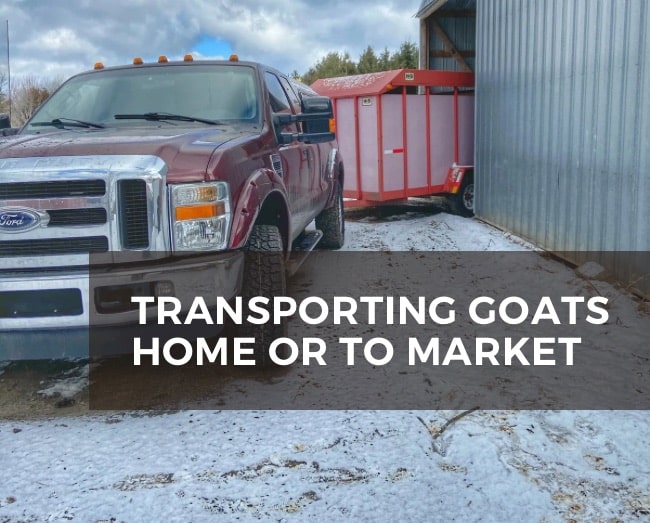Whether you’re at the stage of marketing your goats or buying new stock to start or add to your herd, you’ll need to make sure you’re prepared for transporting them.
Table of contents
Transportation options for goats
Unlike larger livestock, such as cattle or horses, you have a little more flexibility for transporting goats simply due to their size. However, that means you’re probably less likely to own a livestock trailer.
That begs the question: How do you transport goats?
Factors to consider
There are a number of options that can be used. However, whatever option you choose to haul your goats you’ll want to:
- Make sure there is adequate air flow
- How many goats are you hauling? Make sure there’s a enough room in the hauler, crate or trailer
- Think about how you’ll load and unload the goats. Do you need a ramp? Do you need to block the bottom of the truck or trailer so goats don’t escape. Will you need a halter or lead line to make sure your goats don’t get loose?
- Depending on how far you’re traveling you may need to bring along hay and water
Types of goat transportation options
There are a variety of transportation options for goat.
Goat crate or goat box for a truck
A goat crate or box is a small enclosure with a door that can be simply slide into the back of your pickup truck or even the back of an SUV or van.
Goat crates can be large dog or pet crates or a DIY version where a box is built out of wood or livestock panels.
On our farm if we’re moving just one or two small kids or little goats, often we’ll use a large dog crate. It’s a bit easier than using a trailer. Often you can also find them for free or for a reasonable price at garage sales or online marketplace type listings.
Transporting goats in a truck bed
Another option is to transport goats in a truck bed with an enclosure, such as a truck bed topper or a goat hauler box that’s specifically built for truck beds, often called a popper.
Basically it’s a livestock trailer box that slide into the back of the truck. A popular brand is from Alumline, called a truck popper.
Goat trailer or goat hauler
If you’re transporting more animals, a goat trailer is worth using. Typically these are smaller livestock trailers with a single axle and a bumper hitch. Due the total weight of the goats as livestock, these types of trailers can be more easily hauled with smaller trucks or even some SUVs.
Another option for a goat trailer is using smaller horse and cattle trailers. While these trailers are easier to find used, often they are older and may need more repairs and maintenance. They are also heavier double axle trailers, which may limit what type of truck can handle hauling the trailer.
If your herd is larger and you’re transporting them more frequently, such as a brush management business, custom double decker goat trailers are an option.



Health considerations when hauling goats
Transporting goats can lead to extra stress which mean potential health issues for your goats since their immune system may be impacted. Here are a variety of factors to consider when and how you’re hauling your goats:
Weather conditions
- Avoid very hot weather. Even with vents in a trailer or box, air flow may not be enough for goats, especially with longer travel. This can cause severe heat stress
- Cold temperatures. Smaller goats may smother each other in an attempt to stay warmer.
Age of goats
Younger goats, baby goats, older goats and pregnant does are more likely to have issues with transportation stress.
Length of time of travel
If you’ll be hauling your goats over a long distance it can also increase the probability of health issues. Taking breaks on regular intervals can help. Fresh water and feed, including hay, should be on hand.
Rules for transporting goats over state lines
There are two primary requirements or rules that need to be followed when selling/buying goats and then transporting those goats home or to the buyer. This includes a Certificate of Veterinary Inspection and making sure your goats have proper scrapie identification. Read further for more details.
Certificate of Veterinary Inspection or Health Certificate
If you’re selling or purchasing goats out of state you’ll need to get a Certificate of Veterinary Inspection or it’s sometimes referred to as a Health Certificate.
Typically the seller is responsible for coordinating the actual inspection of health by a veterinarian. The veterinarian is the one who then completes the Certificate of Veterinary Inspection after doing a health assessment of the goats being sold.
However, as the buyer you should be aware of the rules and regulations for transporting your livestock.
You’ll need to make sure you know your state laws, along with the laws where you’re purchasing your goats. A good place to start is contacting your state department of agriculture.
For more detailed information, visit the American Veterinary Medical Association website.
Proper scrapie tags or identification
Additionally, all goats sold are required by federal law to be tagged with an official USDA scrapie tag.
Quarantine your new goats
If you’re transporting goats home, place them in a quarantine pen for the first 30 days to observe any health or bio security issues more closely and easily handle your new animals before they join the rest of the herd. Pneumonia is a common issue to watch for with transportation stress.
How we haul goats on our farm
As our herd has grown, we’ve changed how we haul our goats. For quite sometime we used a pickup truck with a topper. Most of the time we were loading goats up to go to the livestock market and then later to our processor when we started direct marketing goat meat. Now we use a small single axle trailer designed for small livestock, which allows us to move a larger number of goats.
References:
- Transporting livestock. 2023. American Veterinary Medical Association.
Related blog posts

LEAVE A COMMENT
Comments